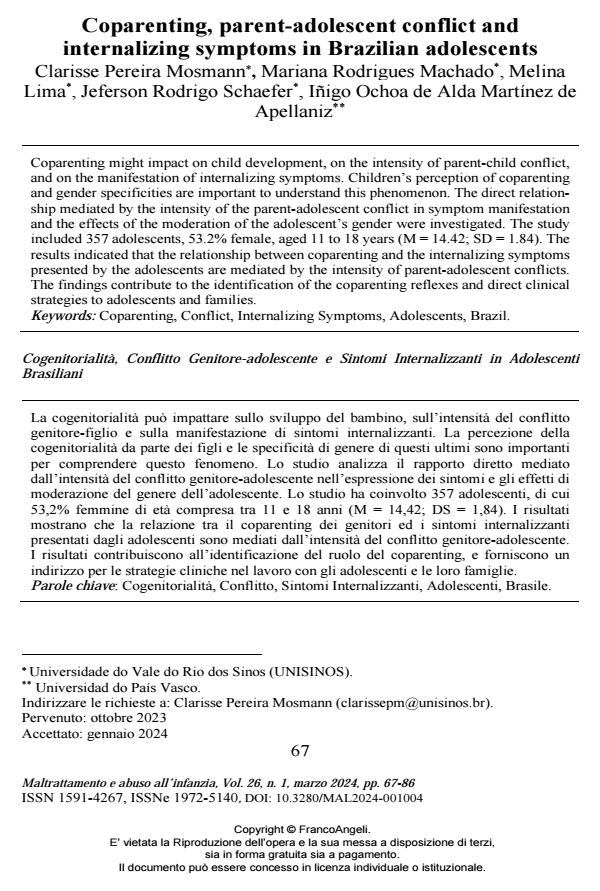Cogenitorialità, Conflitto Genitore-adolescente e Sintomi Internalizzanti in Adolescenti Brasiliani
Journal title MALTRATTAMENTO E ABUSO ALL’INFANZIA
Author/s Clarisse Pereira Mosmann, Mariana Rodrigues Machado, Melina Lima, Jeferson Rodrigo Schaefer, Iñigo Ochoa de Alda Martínez de Apellaniz
Publishing Year 2024 Issue 2024/1
Language English Pages 20 P. 67-86 File size 244 KB
DOI 10.3280/MAL2024-001004
DOI is like a bar code for intellectual property: to have more infomation
click here
Below, you can see the article first page
If you want to buy this article in PDF format, you can do it, following the instructions to buy download credits

FrancoAngeli is member of Publishers International Linking Association, Inc (PILA), a not-for-profit association which run the CrossRef service enabling links to and from online scholarly content.
Coparenting might impact on child development, on the intensity of parent-child con-flict, and on the manifestation of internalizing symptoms. Children’s perception of coparenting and gender specificities are important to understand this phenomenon. The direct relationship mediated by the intensity of the parent-adolescent conflict in symptom manifestation and the effects of the moderation of the adolescent’s gender were investigated. The study included 357 adolescents, 53.2% female, aged 11 to 18 years (M = 14.42; SD = 1.84). The results indicated that the relationship between coparenting and the internalizing symptoms presented by the adolescents are mediated by the intensity of parent-adolescent conflicts. The findings contribute to the identifi-cation of the coparenting reflexes and direct clinical strategies to adolescents and fam-ilies.
Keywords: Coparenting, Conflict, Internalizing Symptoms, Adolescents, Brazil.
Clarisse Pereira Mosmann, Mariana Rodrigues Machado, Melina Lima, Jeferson Rodrigo Schaefer, Iñigo Ochoa de Alda Martínez de Apellaniz , Coparenting, parent-adolescent conflict and internalizing symptoms in Brazilian adolescents in "MALTRATTAMENTO E ABUSO ALL’INFANZIA" 1/2024, pp 67-86, DOI: 10.3280/MAL2024-001004